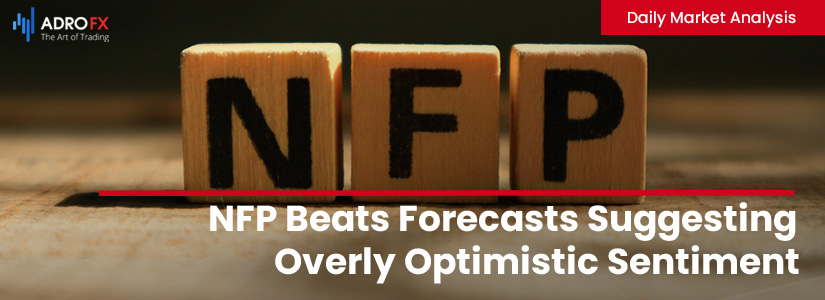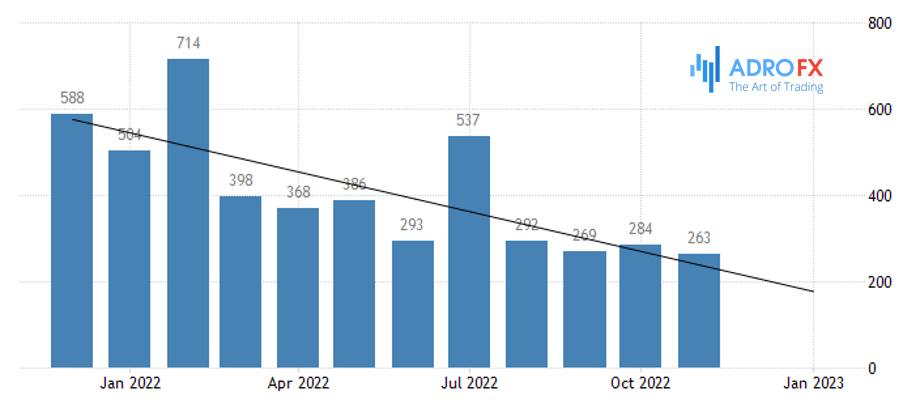NFP Beats Forecasts Suggesting Overly Optimistic Sentiment | Daily Market Analysis

Key events:
- UK - Composite PMI (Nov)
- UK - Services PMI (Nov)
- USA - ISM Non-Manufacturing PMI (Nov)
Risk appetite strengthened noticeably last week as investors grew confident that the Fed could curb inflation without plunging the U.S. economy into a deep recession. Fed Chairman Jerome Powell signaled Wednesday that the time to moderate the pace of rate hikes might come as soon as the next meeting in December. The PCE consumer spending price index and ISM manufacturing index, released Thursday, confirmed the Fed's success in controlling inflation.
However, Friday's strong labor market report spoiled that favorable picture. Stocks in the U.S. and Europe went sharply negative on the release of the jobs data, U.S. Treasury 2-year note yields jumped 13 bps to 4.35%, and 10-year bond yields rose 9 bps to 3.6%. The dollar index, which fell to its lowest since June 28 at 104.37p before employment statistics were released today, bounced back above 105p.

Total U.S. Non-Farm Payrolls rose by 263,000 in November, beating the consensus forecast by economists surveyed by Bloomberg (+200,000). The October figure was revised upward from +261,000 to +284,000. The unemployment rate, as expected, remained unchanged at 3.7%. However, average hourly earnings rose 0.6% over October (m/m) and 5.1% over November 2021 (y/y), exceeding forecasts (+0.3% m/m and +4.6% y/y).

The resumption of wage growth indicates that labor shortages continue to put upward pressure on inflation. Whereas exactly 24 hours ago the federal funds rate futures market was expecting a 2023 peak rate of 4.86%, implying a decline to 4.38% (-48 bps) by year-end, after the release of the jobs report the peak rate was already assumed to be 4.97%, with a decline to 4.52% (-45 bps) implied by year-end 2023. The annualized wage growth rate over the seven months, including October, has been steadily slowing and only in July showed an essentially flat rate. However, in November we see a rather sharp rebound upward.
The labor market remains overheated. Back in October, economists estimated that in order to eliminate overheating in the labor market, the number of jobs would need to drop by 35,000 each month over the course of a year. That's taking into account the natural decline in the labor force participation rate as the labor force ages.
As we can see, the Fed is split into two camps: the "hawks" are led by Fed Chairman Jerome Powell and the "doves" by Lael Brainard. After the labor market report for November, the number of "doves" may shrink, while the "hawks" may become louder. The published numbers suggest that there will still be a 50 bps rate hike in December. In other words, the cycle of 4 rises in a row by 75 bps will be interrupted. However, the market seems to have been overly optimistic in assuming that the peak rate would not exceed 5%, and perhaps even stop at 4.75%.
The labor market, under the influence of aggressive monetary policy tightening, is weakening very gradually, exactly slower than the Fed expected back in September. The labor market is not signaling that it is at a level that helps stabilize or slow inflation. Following the December 14 Open Market Committee meeting, Fed officials' own updated forecasts will be released (dot plot). Obviously, the unemployment forecasts will be adjusted downward and the inflation and rate forecasts will be adjusted upward.
As for risk appetite, if investors want a pre-Christmas rally in stocks, they will get it, but in the second half of December and at the start of next year (the market will already know the Fed's updated dot plot). The situation could once again develop in a minor direction under the prevailing bearish influence. In other words, the dollar index fell too quickly in November to be sure that it can now consolidate in the 100-105p range. Still, the 105-110p range is not giving up.

The S&P 500 Index closed too optimistically last week above its 200-day Moving Average (for the first time since April). Confidence that the S&P 500 will be able to hold above 4,000p is melting before our eyes.









